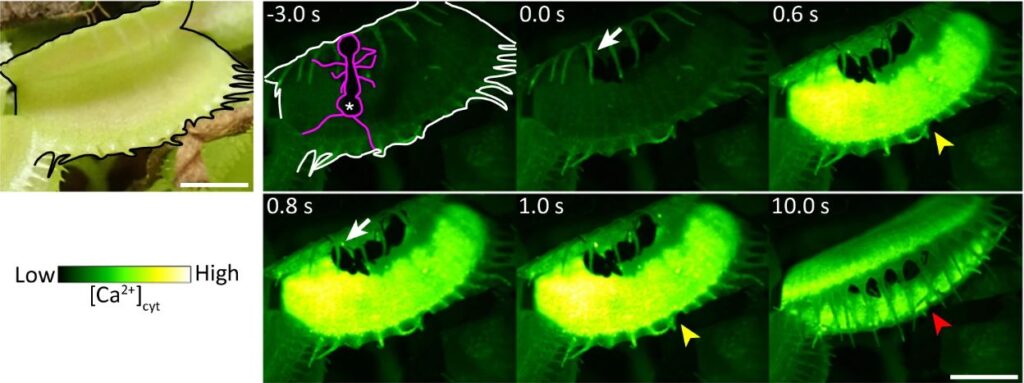
Recent research has unveiled the intricate mechanisms behind the quick reaction times of the Venus flytrap (Dionaea muscipula), a plant renowned for its rapid prey capture. In a groundbreaking study published in Nature Communications, a team led by Hiraku Suda has identified a mechanosensor named DmMSL10 that plays a crucial role in the plant’s sensitivity to touch.
The Venus flytrap relies on specialized sensory hairs located along its leaves, which respond to specific stimuli through the release of calcium ions. While the basic function of these hairs has been understood, the exact mechanisms driving their responsiveness remained largely speculative until now. The latest findings indicate that the absence of the DmMSL10 channel significantly impairs the plant’s ability to process even slight touches.
Key Findings on Mechanosensory Function
The study involved creating a variant of the Venus flytrap that lacks the DmMSL10 chloride ion channel. Observations revealed that while both the wild type and the knockout variant could initiate calcium ion release when stimulated, the latter exhibited a markedly reduced rate of action potential generation. In contrast, the wild type continued to generate action potentials even after stimulation ceased, highlighting the essential role of DmMSL10 in prey detection.
In a subsequent experiment, ants were placed on the leaves of both plant variants. The wild-type Venus flytrap captured the first ant that landed on its leaf, while the knockout variant failed to respond as multiple ants wandered without triggering sufficient calcium signaling to close the trap. This stark difference underscores the importance of DmMSL10 in the plant’s ability to detect and respond to potential prey.
Implications for Plant Evolution and Behavior
These insights provide a clearer understanding of how D. muscipula, along with other similar carnivorous plants, achieves its remarkable hunting capabilities. The research suggests that the evolution of such mechanosensory mechanisms may parallel similar adaptations found in certain animal species, offering exciting avenues for future exploration.
The findings not only enhance our comprehension of plant biology but also pave the way for further studies into the evolutionary pathways that have shaped these fascinating organisms. As scientists continue to unravel the complexities of plant behavior, the Venus flytrap serves as a captivating example of nature’s ingenuity in predatory strategies.







